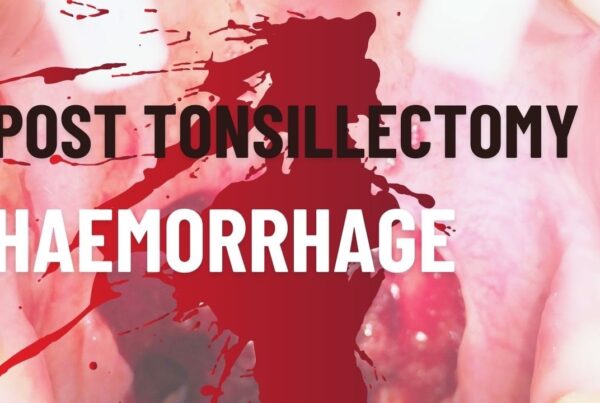CASE STUDY: TRAUMATIC BRAIN INJURY
A 30 year old male is brought to the Emergency Department with a traumatic brain injury. The history is an alleged assault with respiratory arrest following. He has been intubated by the paramedics and has been given adrenaline for hypotension. His pulse rate is 140bpm and his blood pressure is 95mmHg systolic.
On arrival and after initial assessment there are several requests made by various members of the trauma team.
“Can we please give mannitol?”
“Should he have a vasopressor as his BP is low?”
“Can we please paralyse him?”
Which of these requests are valid and why?
Should we use mannitol?
The whole reason for using mannitol is to decrease viscosity and thus increase cerebral blood flow through osmotic diuresis. Does this increase cerebral perfusion pressure?
Mannitol will work only with an intact blood-brain barrier. In fact, current guidelines will only recommend its use in normotensive, euvolaemic patients with clinical signs of raised intracranial pressure.
There is no evidence that dehydration in neurotrauma improves outcome (Neurol Res 1999). To the contrary, the use of mannitol in hypotensive patients can affect cerebral perfusion pressures and lead to decreased perfusion which is an independent predictor of worse outcome (J Trauma 1993).
If indicated the doses warranted are 0.5-1g/kg.
Certainly in this patient mannitol was not indicated as part of the initial resuscitation.
A LITTLE BIT OF TRIVIA ABOUT MANNITOL
As recently reported in the BMJ, there is doubt directed at the original studies, three in total that support high dose mannitol. The studies were published in Neuroscience and Journal of Neuroscience between 2001 and 2004 and recommended 1.4g/kg on average of mannitol. According to Roberts who writes this article, the studies allegedly were conducted by Dr Julio Cruz, a neurosurgeon at the Federal University of Sio Paulo. Apparently the University denies ever having employed him, and his co-authors are not able to verify the patients used. Dr Cruz himself cannot be called on to support his studies as he apparently committed suicide in 2005.
USE OF VASOPRESSORS IN ACUTE BRAIN INJURY
There has been significant discussion about the use of vasopressors to increase Cerebral Perfusion Pressure (CPP).
CPP = Mean arterial pressure(MAP) – Intracranial pressure(ICP)
CPP has been proposed as being beneficial if >70mmHg.
There is significant effect on autoregulation in head injury.
At present, there is no significant evidence for the use of vasopressors in acute head injury. In fact, the data indicates a worse outcome in this patient group (J Neurosug 1995).
Should patients be paralysed?
There is evidence that long term paralysis use in patients may have a detrimental effect and should be used for those patients with known raised intracranial pressure (Crit Care Med 1995). In these patients with initial presentation and GCS of 3, following intubation, sedation may be adequate.
The CT showed extensive subarachnoid blood and a tight brain. ICP was measured at 100mmHg.











Excellent case, thankyou. Made me tachycardic imagining such a case being brought to my ER. Concise facts well presented. I learned from it
thank you for this presentations, there’s always a discussion about use of certain drugs in TBIs, including osmotic diuretics and vasopressors…
Makes me wonder how long will this patient last if it came to our facility with no Dr. on duty except myself, RN2 and 2x volunteer Ambulance Officers. There will be a lot of time wasted getting orders on the phone from other facility until Retrieval unit arrives!!!
thank u for a very informative update. please continue the same
So would you consider boluses of a hypertonic fluid such as 3% saline in this case? As it’s effects are to reduce intracranial pressure and simultaneously support intravascular volume?
Good comment. The aim is always normovolaemia. There is some evidence that hypertonic saline may improve survival following severe head injury. Although it seems on;y when the blood brain barrier is maintained. This is difficult to differentiate in the early stages, and certainly before the initial head CT. The push therefore is still for salty water- some saline- not dextrose.
Great case.
A comment on the vasopressor aspect of the case (I agree with the mannitol and paralysis arguements). I’d just be a bit concerned about a systolic blood pressure of 95mmHg on arrival to the ED, and I’d actually have a low threshold for some vasomotor support – pehaps even an isolated alpha agonist like metaraminol.
The reason I say this refers to an article published in 2001 in the Archives of surgery. It was a prospective study examining various physiological variables as predictors of outcome in head injury. Surprisingly, hypoxia as a variable was not particularly significant, but the presence of a systolic blood pressure of <90mmHg was associated with a significant increase in mortatlity for all categories of head injury. There are many papers that confirm that a shocked mutli-trauma patient has a fairly guarded prognosis (duh!), but the suggestion here was that a patient with an isolated head injury will do significantly more poorly in the context of shock than if normotension is maintained. The authors also suggested there may be a neurogenic element to shock in this instance, and that therefore the lowered sBP may be fluid refractory in nature.
Of course, the first priority in this case would be fluid resuscitation, but personally, I would have a low threshold for some sort of vasopressor therapy in the event of a blood pressure that was trending downwards.
For anyone interested, the appropriate reference is:
Manley et al. Archives of Surgery 2001; 136(10) : 1118-1123.
All the interventions states are very rarely indicated in the initial phase but may be of use in the ICU after the patient is appropriately monitored e.g CVP, bolt.
The key to good neurotrauma care is to prevent secondary brain injury. It comes back to the ABC. Protect airway, maintain oxygenation, control ventilation (especially prevent hypercarbia), support BP (usually with fluids). With hypotension in trauma you always need to worry that there are other injuries resulting in haemorrhagic shock.
There is no problem in paralysing the patient in the initial phase to gain control of ventilation and prevent gagging on the tube (which will raise ICP). I would do this for CT or interhospital transport. The issue about relaxants is only a long term issue in ICU.
The next step is managing intracranial hypertension with urgent surgical decompression (if possible)
If the scan is normal then sedation can be reduced to do a clinical evaluation.
Ideally relaxants can be allowed to wear off once the patient has been settled in ICU.
Empiric Osmotherapy is only indicated in incipient herniation e.g. blown pupil, lateralising signs Cushing’s response/respiratory arrest.
Otherwise it is used for refractory raised ICP (measured with a bolt in ICU) in controlled small boluses to obtain serum osm no higher than 320 mosm/L. Mannitol is the traditional drug but hypertonic saline is also used. All of these are temporising measures and have problems with use.
Vasopressors are indicated after the patient is fluid resuscitated and may be indicated to drive the CPP if there is raised ICP. This is only something you think about in ICU (or possibly in spinal shock). The jury is out about which one is better but there is some evidence for noradrenaline.